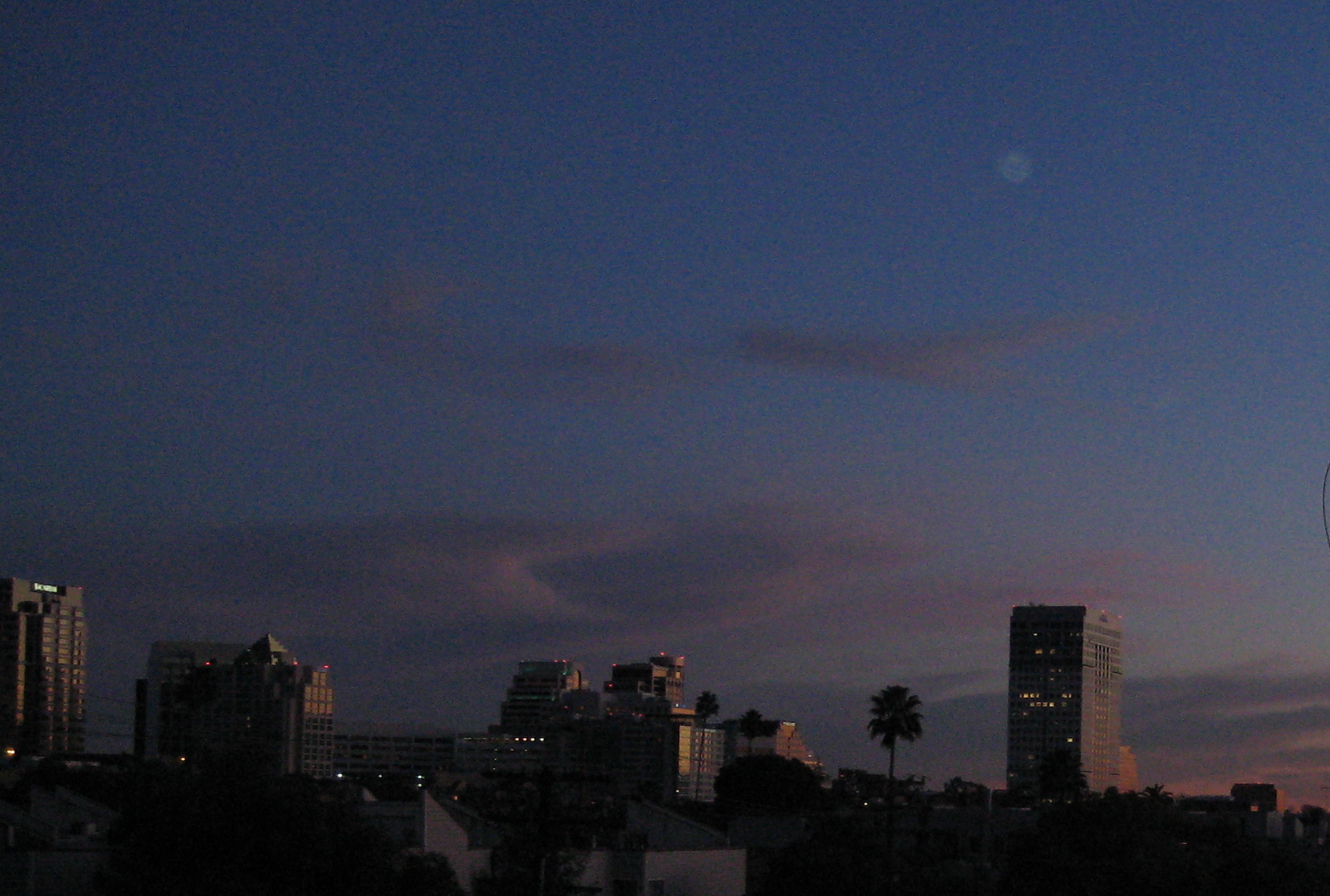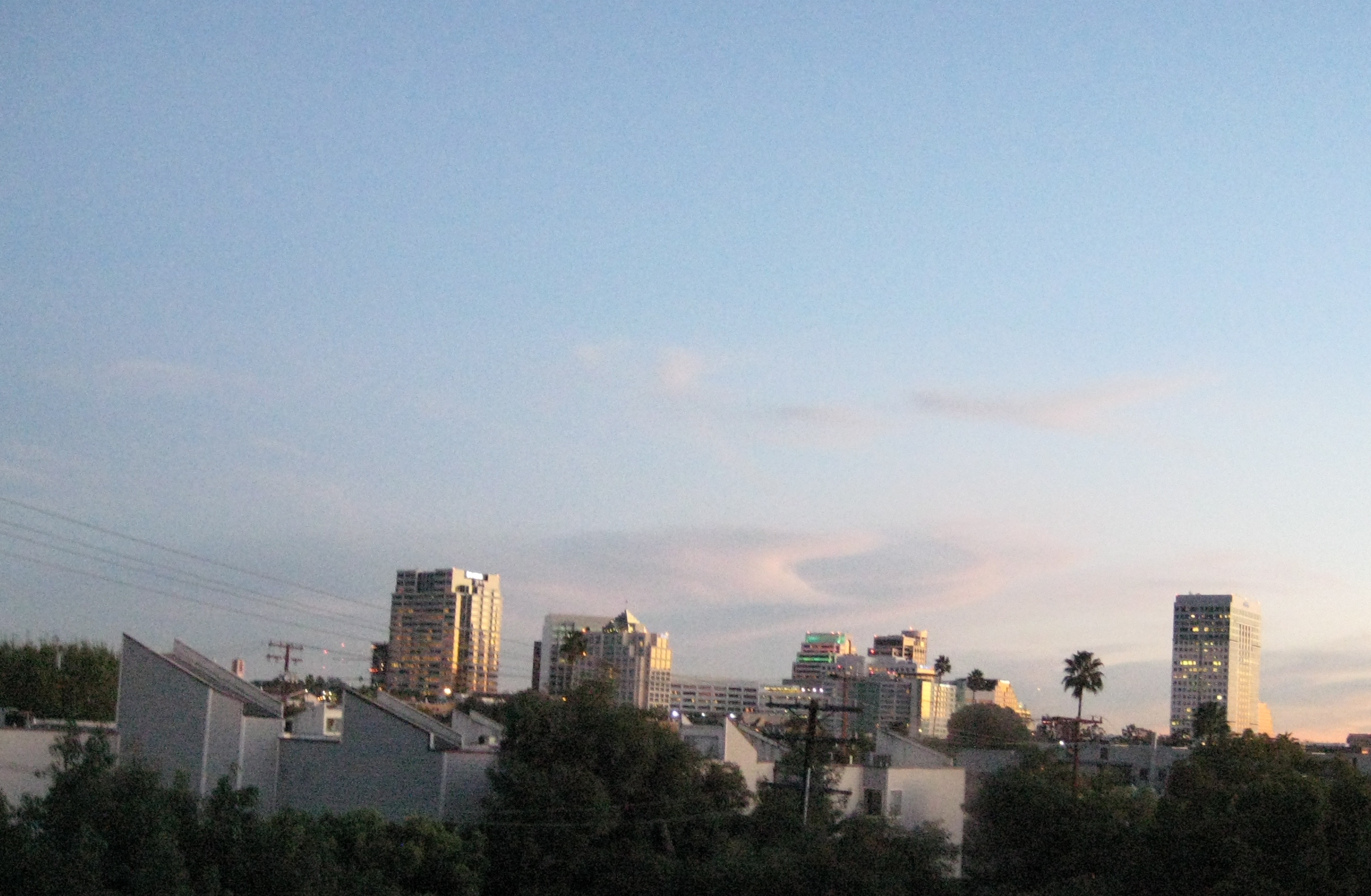They seem grainy. What’s odd to me is that using flash seems to help keep the colors in the sky truer to what I see in real life, versus choosing no flash, which leads the camera to let too much light in. (And, no: I can’t adjust that later. It’s not about a certain shade of pink or blue, but rather the streaks of pink and blue against each other, from the air layers—sometimes punctuated with white from the clouds. If that isn’t part of the image in the first place, it can’t be fixed.)
But with the flash, the camera also speeds up too much. So I need to take all these settings back to manual for the dawn and dusk shots, so I can get the streaks in the sky without that grainy, fast-film-like effect.
In this case, the clouds are distinct enough that it works without the flash. This particular one could be color-corrected to increase the pinkish quality while retaining the cloud striations. Obviously, in addition to messing around with the manual settings I should see what the camera’s native “night shot” default setup does for me. (And it wouldn’t be a bad idea to try that in Hollywood, too, to see how that set of settings handles neon signs—these are very difficult to get right when you still also care about the look of the sky, and want the hills in the background.)




; ?>/images/user.png)
; ?>/images/email.png)
; ?>/images/feed.png)


{ 4 comments… read them below or add one }
Interesting challenge, dealing with “capturing” light. I tried to catch the “blue moon” New Year’s Eve, and other lower light stuff for my first post of the new year. Our little, flat SD80 Canon seems to do pretty good. What do you use?
It is a Canon Powershot Elph SD1000, but remember that I have a flaw in the lens that’s just down and to the right from center–so I either have to put up with that “raindrop effect” on all my pictures, or frame everything so that I can crop out three-quarters of the final image. So a lot of those megapixels are wasted.
I definitely need to either fix this camera, or replace it. (I also need to figure out how to reset its camera, if I’m going to be doing do many dawn and dusk sets; that’s the kind of thing I HATE scrabbling around in the users’ manuals to find.)
But, yes: this is a nice little pocket camera: very flat, very compact. Other than the lens irregularity, the camera isn’t the limitation–the limitation is me, because years with awesome point-and-click-style cameras (I had a great Pentax one) have simply made me lazy.
I didn’t even attempt the blue moon; I knew I’d cry. Though maybe if I’d turned on the flash . . . Which of course should help with none of this, but does.
“Reset its clock”–not its “camera.” Hey: I knew what I meant!
The camera doesn’t need to know the time unless you plan to print that annoying
date on every shot. And if you don’t look up how to add THAT, you’ll be fine.